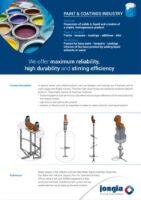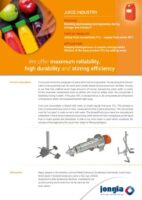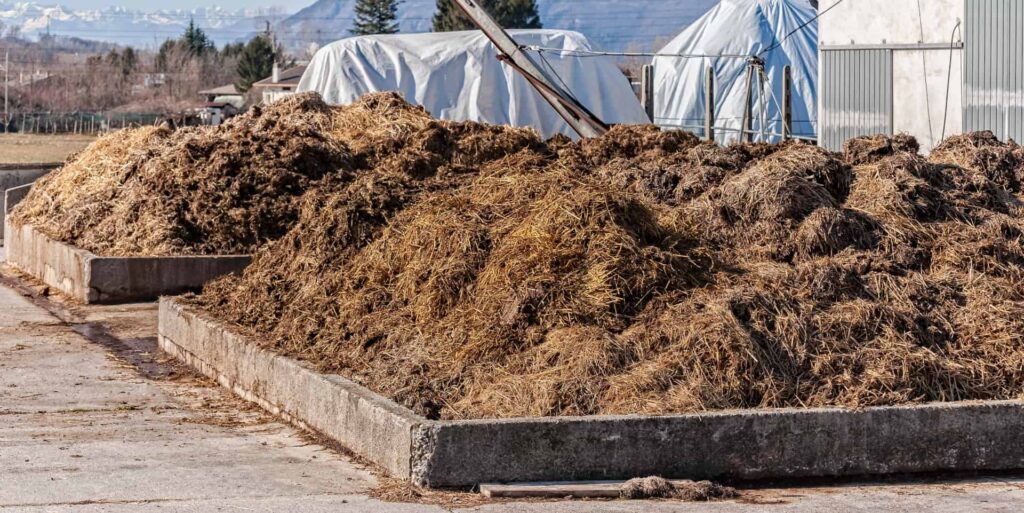
Manure Fermentation
A guide to enhance biogas production
Manure is one of the most abundant agricultural waste products, and it has been used for a long time for calcareous fertilizer. However, with the growing need for green energy and sustainable waste management, manure is nowadays being utilized for biogas production through a process called anaerobic digestion. Manure fermentation is an essential step in this biogas production process that enhances the production of biogas. In this blog post, we will provide an overview of manure fermentation, including the fermentation process, pretreatment methods, and factors affecting the fermentation process. So, keep reading to gather all the information you need for understanding the process.

How does the fermentation process work?
Manure fermentation is a biological process that occurs under anaerobic conditions, which means in the absence of oxygen. The process involves the breakdown of organic matter by microorganisms into simpler compounds, mainly biogas, which is a mixture of methane and carbon dioxide. The fermentation process can be divided into four main stages: hydrolysis, acidogenesis, acetogenesis, and methanogenesis.
In the first hydrolysis stage, complex organic molecules such as carbohydrates, proteins, and fats are broken down into simpler compounds such as glucose, amino acids, and fatty acids. These compounds are then utilized by acid-forming bacteria to produce organic acids such as acetic acid, butyric acid, and propionic acid in the next acidogenesis stage. This following stage is acetogenesis, where acetogenic bacteria convert the organic acids into acetic acid, hydrogen, and carbon dioxide. In the end, methanogenic bacteria convert the acetic acid, hydrogen, and carbon dioxide into emissions of methane and carbon dioxide in the final methanogenesis stage. As you can see, the fermentation process is a complex process that includes several steps. The process can be done following different methods.
Non-Airtight Fermentation
Non-airtight fermentation is a low-cost and low-maintenance method for manure fermentation that has gained popularity in recent years. The process involves the use of open pits or lagoons, which provide anaerobic conditions for the fermentation process. However, non-airtight fermentation has some disadvantages, such as low biogas production and odor issues.
Dry Fermentation
Dry fermentation is another method for manure fermentation that is getting more popular by the time. The process involves the use of solid-state fermentation, where the manure is mixed with other organic wastes such as paper sludge and dried to a moisture content of 30-40%. The mixture is then loaded into fermentation tanks, where the fermentation process takes place. Dry fermentation has several advantages, such as higher biogas production, lower odor issues, and the production of high-quality fertilizers. But, before diving in the process of fermentation, you must have done a pretreatment.
The pretreatment methods for manure fermentation
Pretreatment methods can enhance the enteric fermentation process by breaking down complex organic matter into simpler compounds, increasing the surface area for microorganisms to act upon, and reducing the inhibitory effects of certain compounds such as lignin and cellulose. Chemical pretreatments such as dilute acid step can be used to break down lignocellulosic materials into simple sugars such as glucose and xylose, which can be readily utilized by microorganisms. Alkaline-based pretreatments can also be used to break down lignocellulosic materials and reduce the inhibitory effects of ammonia and other compounds.
Which factors affect the fermentation process?
Several factors affect the fermentation process, including the pH, temperature, ammonia concentration, and ratio of cattle manure to other organic wastes. The optimum pH for manure fermentation is between 6.8 and 7.5, and any significant deviation from this range can inhibit the fermentation process. Similarly, the temperature affects the activity of the microorganisms, and the optimum fermentation temperature range for manure fermentation is between 35°C and 40°C.
The presence of ammonia in manure can also inhibit the field of fermentation, and the optimum concentration of ammonia is between 2% and 4%. The ratio of cattle manure to other organic wastes can also affect the fermentation process, and a higher ratio of cattle manure results in higher biogas production.
The presence of ammonia in manure can also inhibit the field of fermentation, and the optimum concentration of ammonia is between 2% and 4%. The ratio of cattle manure to other organic wastes can also affect the fermentation process, and a higher ratio of cattle manure results in higher biogas production.
Bioreactor Operation
The bioreactor operation is an essential aspect of manure fermentation that affects the efficiency and stability of the fermentation process. The bioreactor should be operated under optimal conditions such as pH, temperature, and mixing. Mixing is an essential aspect of the bioreactor operation, as it ensures the distribution of microorganisms and nutrients throughout the mixture. Industrial agitators can be used for mixing in large-scale bioreactors to ensure optimal mixing.
Utilization of Glucose
The utilization of glucose is an essential aspect of manure fermentation, as it is the primary substrate for the fermentation process. Glucose can be obtained from the hydrolysis of carbohydrates such as cellulose and hemicellulose. However, the concentration of glucose in manure is relatively low, and pretreatment methods such as chemical and alkaline-based pretreatments can be used to increase the concentration of glucose.
Correlation Analysis and Redundancy Analysis
The correlation analysis and redundancy analysis are statistical methods used to determine the relationships between different variables affecting the fermentation process. Correlation analysis is used to determine the degree of association between two variables, while redundancy analysis is used to determine the contribution of each variable to the fermentation process.
Downstream Fermentation
Last but not least, the downstream fermentation is a process where the fermentation raw is transferred to a second fermentation tank for further fermentation. The process can enhance the production of medium-chain fatty acids such as caproic acid, which can be converted into excellent products such as biofuels and chemicals. Downstream fermentation can also reduce the inhibitory effects of certain compounds and enhance the stability of the continuous fermentation process.
Positive correlation lactic acid accumulation and biogas production
Several studies, including Wageningen livestock research, have shown a positive correlation between lactic acid accumulation and biogas production in manure fermentation. Lactic acid bacteria are naturally present in manure, and they produce lactic acid through the fermentation of carbohydrates. Lactic acid accumulation is desirable because it lowers the pH and creates an environment favorable for methane-producing bacteria.
Studies have also shown that the accumulation of intermediate lactic acid, such as L-lactic acid and C4 production, can also enhance biogas production. The accumulation of these acids can be achieved by controlling the pH and fermentation conditions.
Studies have also shown that the accumulation of intermediate lactic acid, such as L-lactic acid and C4 production, can also enhance biogas production. The accumulation of these acids can be achieved by controlling the pH and fermentation conditions.
Rabbit Manure Fermentation
Rabbit manure fermentation is an emerging field that has gained popularity in recent years. Rabbit manure is rich in nutrients and has a higher nitrogen content than other animal manures. However, rabbit manure fermentation requires specific conditions, such as a higher temperature range of 45°C to 50°C, to ensure optimal anaerobic fermentation. Feel free to get in touch with Jongia, to learn more about anaerobic manure fermentation and why it could be interesting for your company.
Manure Fermentation Summarized
Manure fermentation is a promising technology that can enhance the utilization of agricultural waste and reduce the environmental impact of waste management. The optimization of pretreatment conditions, the use of J. Clean technology, and the optimization of xylose concentrations can lead to higher biogas production and reduce environmental impact. The integration of nanotechnology and biotechnology into a manure fermentation plant can enhance the efficiency and sustainability of the process. The concentration of xylose in manure is a critical factor that can significantly impact biogas production. The optimization of xylose concentrations can be achieved through pretreatment methods and the hydrolysis of hemicellulose. Manure fermentation is a promising field that can contribute to a sustainable future for agriculture and waste management.
Frequently Asked Questions
What is manure fermentation?
Manure fermentation is a biological process involving the breakdown of organic matter in manure under anaerobic conditions, resulting in the production of biogas, primarily methane and carbon dioxide. This process is essential for sustainable waste management and biogas production.
How does the fermentation process work?
The fermentation process consists of four stages: hydrolysis, acidogenesis, acetogenesis, and methanogenesis. Each stage involves specific microorganisms breaking down complex organic matter into simpler compounds, eventually producing biogas. Optimal conditions, like temperature and pH, are crucial for efficient fermentation.
What are the different methods of manure fermentation?
There are several methods, including non-airtight fermentation, which uses open pits, and dry fermentation, which mixes manure with organic waste in low moisture for higher biogas yields. Each method has its own advantages and disadvantages in terms of efficiency and odor management.
What factors affect the fermentation process?
Key factors include pH, temperature, ammonia concentration, and the ratio of cattle manure to other organic wastes. Optimal conditions, such as a pH between 6.8 and 7.5 and a temperature of 35°C to 40°C, significantly enhance biogas production.
What is the role of pretreatment in manure fermentation?
Pretreatment methods break down complex organic compounds, increasing surface area for microorganisms and improving fermentation efficiency. Techniques like chemical and alkaline pretreatments can help reduce inhibitory effects of compounds and increase the availability of sugars for microorganisms.
Contact our specialized team for all your questions

Tom Pruymboom
Sales Director
Area Worldwide

Bart Brouwer
Area Sales Manager
Area Worldwide
Technical Questions?

Sijko van der Veen
Application Engineer
Technical Specialist

Sijko van der Veen
Application Engineer
Technical Specialist
Popular Posts
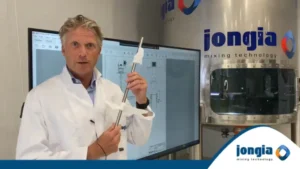
Tutorial: How does the BioFoil® propeller work?
The BioFoil® propeller is not just any propeller. It is Jongia Mixing Technology’s own design for the Biogas market. In the Biogas process gas is generated and disposed of from a tank filled with liquid (digestate). Recently, this technique has
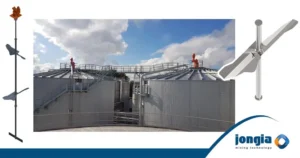
The development of a proprietary biogas agitator
Jongia Mixing Technology has been active in the biogas market since 2008. In the process regarding biogas, gas is generated and disposed of from a tank filled with fluid (digestate). This digestate mainly consists of organic waste. Over the last

The BioFoil® propeller: an innovative stirring element
For mixing processes in every market Jongia Mixing Technology can recommend the hydrofoil propeller. This is a stirring element that is extremely product-friendly due to its shape. It’s a propeller with many possibilities because of its low energy consumption and




